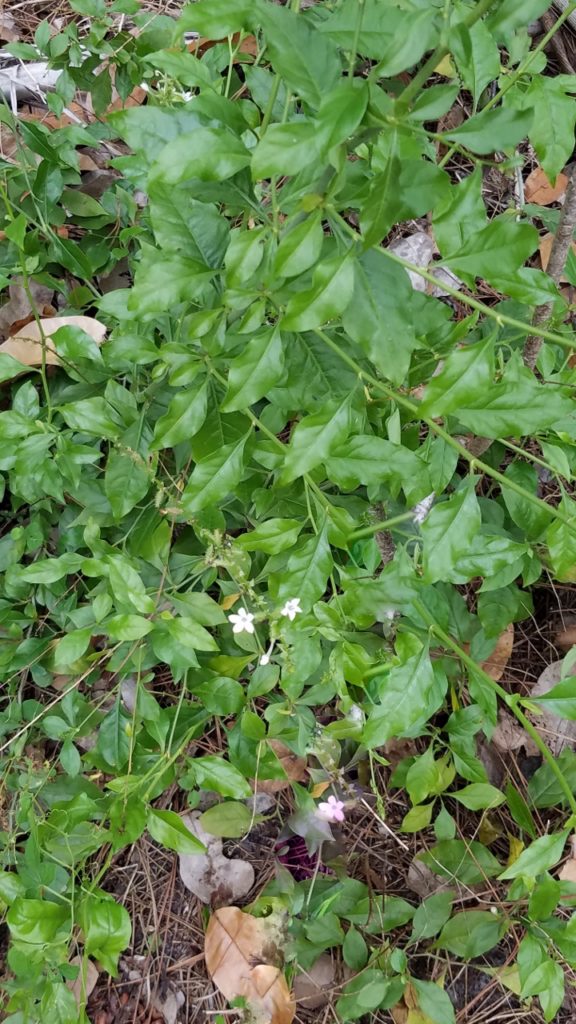Wild Plumbago
Plumbago scandense
Wild Plumbago is naturally found along the coast from Volusia County south to the Keys and Collier, Lee, Manatee and Levy Counties inland. It grows on the east side of Lake Okeechobee along Lake Okeechobee Ridge Park Trail. Click for a map. This is near Port Mayaca, but is not the paved trail around the lake.
The dark green lance shaped leaves are four inches long and one to two inches wide. Spikes of white flowers shoot out from the stem ends most of the year. These develop into half inch long, pointed, sticky seeds which stick to clothing and hair. These are difficult to remove without pulling some hair with them. Kind of like removing a bandage.
The Cassius Blue butterfly lays her eggs in the buds. The larvae look like a small grain of rice and are hard to spot. You may see the adult poking around for a spot to lay her eggs though.
Wild Plumbago is a sprawling, matting yet sometimes climbing shrub that likes the deep shade. If it is trimmed back periodically it makes a nice ground cover or small shrub replacing the exotic Jasmine.
If it is growing on the south edge of a hammock with rich soil, it will mound up to three feet high and at times be covered in flowers and many butterflies and pollinators. Full sun produces bronzy, scorched looking leaves. These are otherwise dark green in the shade.
I like to plant this under an oak or other large tree that doesn’t have much human or dog traffic underneath. You can use it on the north side of your house, but keep it trimmed back. Snowberry, Wild Coffee, Marlberry, Coontie, Ferns and shade tolerant grasses can be used in the same area as Wild Plumbago; but give this plant some room to spread.
This is a great plant to use to extend your butterfly garden into a shady area. Just keep in mind the sticky seeds and you will have a permanent ground cover. You will find many seedlings coming up around the yard, so be prepared to do some pulling if they show up in the wrong place.
For an interesting blog about this plant click here.
